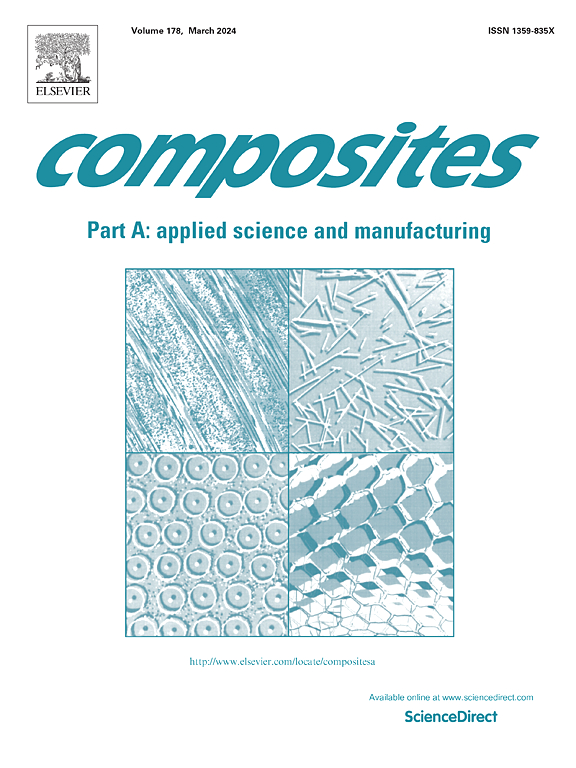Non-synchronous ductile and brittle removal mechanisms for conventional and ultrasonic vibration-assisted scratching of ceramic matrix composites
IF 8.1
2区 材料科学
Q1 ENGINEERING, MANUFACTURING
Composites Part A: Applied Science and Manufacturing
Pub Date : 2025-01-07
DOI:10.1016/j.compositesa.2025.108718
引用次数: 0
Abstract
Ceramic matrix composites (CMCs) are widely recognised as difficult-to-machine materials. The use of diamond abrasive tools combined with ultrasonic vibration offers unique benefits for precision machining. Understanding the differences in material removal mechanisms between ultrasonic vibration-assisted scratching (UAS) and conventional scratching (CS) is crucial for achieving efficient, accurate machining of high-value workpieces. Herein, variable-depth CS and UAS tests were performed, revealing for the first time two brittle removal mechanisms in CMCs: fibre-bending fracture from non-synchronous removal in CS and cyclic indentation-hammering-crack extension in UAS. Further, the non-impulse (CS) and impulse (UAS) force models are established for ductile and brittle removal, respectively. These models were successfully validated through experimental scratching-force data. Results suggest that material removal behavior is primarily influenced by the type of fiber bending fracture and crack extension tip shielding.
求助全文
约1分钟内获得全文
求助全文
来源期刊

Composites Part A: Applied Science and Manufacturing
工程技术-材料科学:复合
CiteScore
15.20
自引率
5.70%
发文量
492
审稿时长
30 days
期刊介绍:
Composites Part A: Applied Science and Manufacturing is a comprehensive journal that publishes original research papers, review articles, case studies, short communications, and letters covering various aspects of composite materials science and technology. This includes fibrous and particulate reinforcements in polymeric, metallic, and ceramic matrices, as well as 'natural' composites like wood and biological materials. The journal addresses topics such as properties, design, and manufacture of reinforcing fibers and particles, novel architectures and concepts, multifunctional composites, advancements in fabrication and processing, manufacturing science, process modeling, experimental mechanics, microstructural characterization, interfaces, prediction and measurement of mechanical, physical, and chemical behavior, and performance in service. Additionally, articles on economic and commercial aspects, design, and case studies are welcomed. All submissions undergo rigorous peer review to ensure they contribute significantly and innovatively, maintaining high standards for content and presentation. The editorial team aims to expedite the review process for prompt publication.
 求助内容:
求助内容: 应助结果提醒方式:
应助结果提醒方式:


